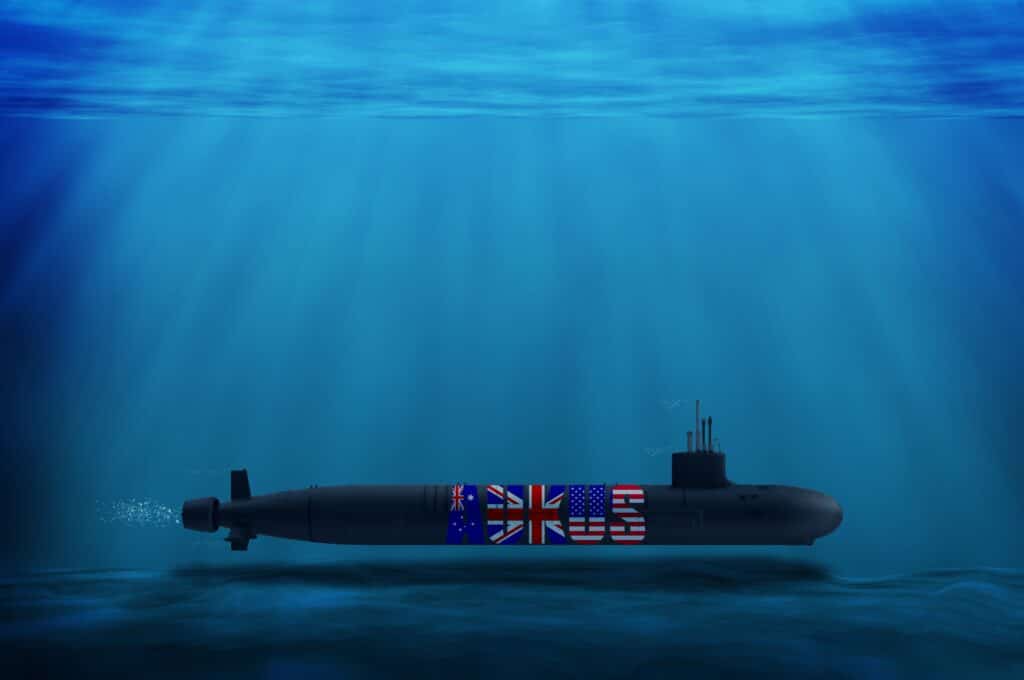It takes a lot to achieve bipartisan political support and (mostly) favourable headlines across Australia’s major newspapers. But apparently, submarines can do the trick.
The numbers involved in Tuesday’s AUKUS submarine deal between Australia, the United States and the United Kingdom are staggering, as is the massive trust in the technology and future capabilities that this deal involves.
The plan will see Australia spending up to $368 billion over the next thirty years to acquire eight nuclear-powered submarines.
There will be $9 billion allocated over the forward estimate to kickstart the program will be cut from defence projects, including the $6 billion that would have been further spent on the now abandoned French submarines program. But over the next decade, we can expect to see an estimated $58 billion spent on this program, before the billions further stack up in the decades beyond this period. There are 20,000 new jobs to be created, over 30 years. The Defence Department will take on the job of storing and dumping the nuclear waste, in accordance with plans that are currently TBD.
The cost of this program? Will land mostly on our kids.
One can only imagine what that level of investment from Australia could do for girls’ education globally, and the positive impacts of peace and security that could flow from that. One could imagine applying this spend to top up the existing expenditure of home security of a different kind — being safe within your home. Sure it’s simplistic and fanciful to make such comparisons, but one might argue that so too is hedging your security on a small number of submarines, regardless of how fast they can move.
Australia’s aid budget has been on a steady decline in recent years, and no match for the challenges ahead. 2022 analyse by ANU found that for every $12 spent on defence, $1 goes to aid. This ratio was $1 in aid to $6 in defence in previous decades. That ratio may balloon out even further.
But it’s the billions here that put the lack of billions elsewhere in perspective.
Given the kids of today are set to pay for AUKUS, let’s hope there’s enough elsewhere to support them with housing affordability, with adapting to climate change, with avoiding poverty and being able to access and afford mental health support, should it be required.
Let’s hope we can still find the billions required to address safety and security in the home. Indeed, it’s a sad development to think that Full Stop Australia had to run a fundraiser last week in a bid to find the support it needs to continue its national 24/7 counselling service for victim-survivors of sexual assault and domestic and family violence. Their pilot funding is set to run out on June 30 this year.
It’s not just money at risk here now and into the future, there is also the bet that’s been taken on the geopolitical risks ahead. There is the risk of the message this deal sends to our pacific neighbours, particularly on Australia’s stance on nuclear proliferation. There is the risk of a 30-year long partnership with the United States and the United Kingdom – countries that have been far from stable in recent years and could politically turn significantly inwards in the years to come. Just ask the women and girls of Afghanistan about the consequences of the United States changing its mind.
The first boats will arrive from the United States in the 2030s, but we’ll be waiting another two decades before seeing subs built on Australian shores with the first to be completed by 2042, and the remainder delivered every three years following – with more details to come, like the actual how-to-build-sub plans (these plans are still being developed in the United Kingdom).
We’ll have all eight submarines by the 2050s. Thirty years from now.
It’s hard to comprehend this future three decade bet when you consider the past 30 years and the changes experienced. What further can we expect from tech and particularly AI, given what we’ve seen even in just the past five years? Thirty years ago we didn’t have social media. We didn’t have social media or iPhones or electric cars. Climate change barely rated a mention. Six months ago we didn’t have Chat GPT.
Thirty years ago, women were still not even permitted on submarines. Australia became the 4th country in the world to permit women to serve on subs in 1998.
On national security, decisions like these can leave you feeling comfortable in the government of the day’s analysis and assessment of the existing and future threats, and the decisions being made to counter them.
That’s especially true when both major parties issue unrelenting support for the plan. One is the government of the day, and the other is the party in government when the plan was conceived.
So strong is this support, that we’re in the unusual situation where Opposition leader Peter Dutton is defending what has very much become an Albanese Government project, against the likes of former Labor Prime Minister Paul Keating – who has been scathing of the plan.
Dutton said that “most Australians” will look to the advice of the “experts who are contemporary, who understand the intelligence and who are acting on it and the government is acting on the advice of intelligence and the military chiefs, the advice they have from their partners and this is a necessary investment for us.”
But even just recent history shows us the error of such complacency. We’ve trusted intelligence advice in the past, only to end up in a war based on a mistake or a lie
I wrote back in September 2021 when the surprise AUKUS announcement was made via a joint virtual statement between Boris Johnson, Scott Morrison and Joe Biden, that despite the talk of freedom and sovereignty, what many of us saw were three men, determining a strategic direction of Australia that would continue for decades to come, impacting all of us.
Two of those three men have been replaced with two other men. They are arguably more moderate than their predecessors, but still represent a world order that’s very much dominated by men.


